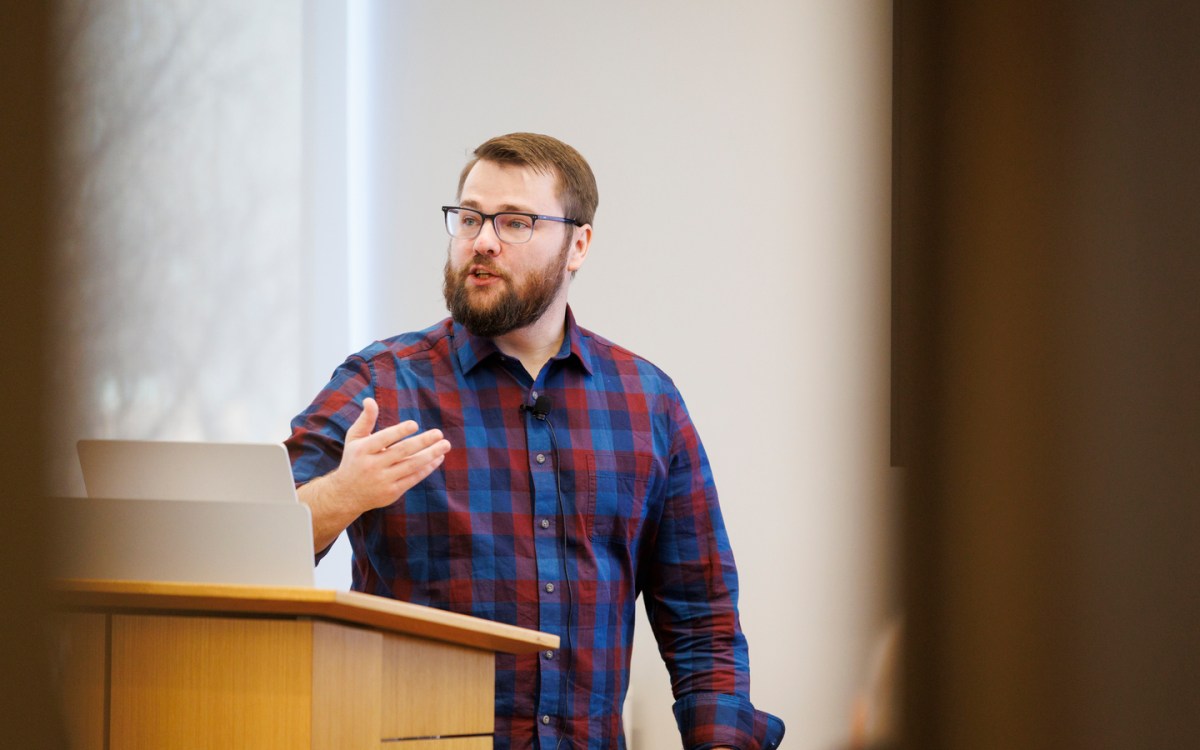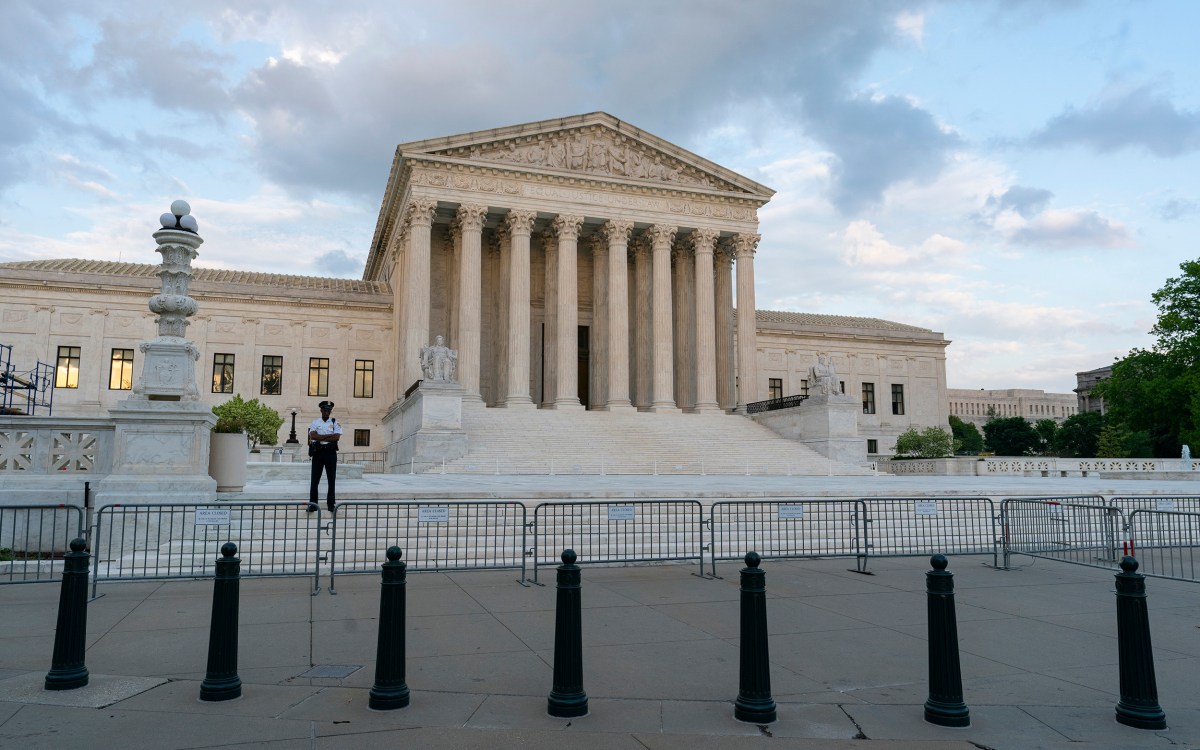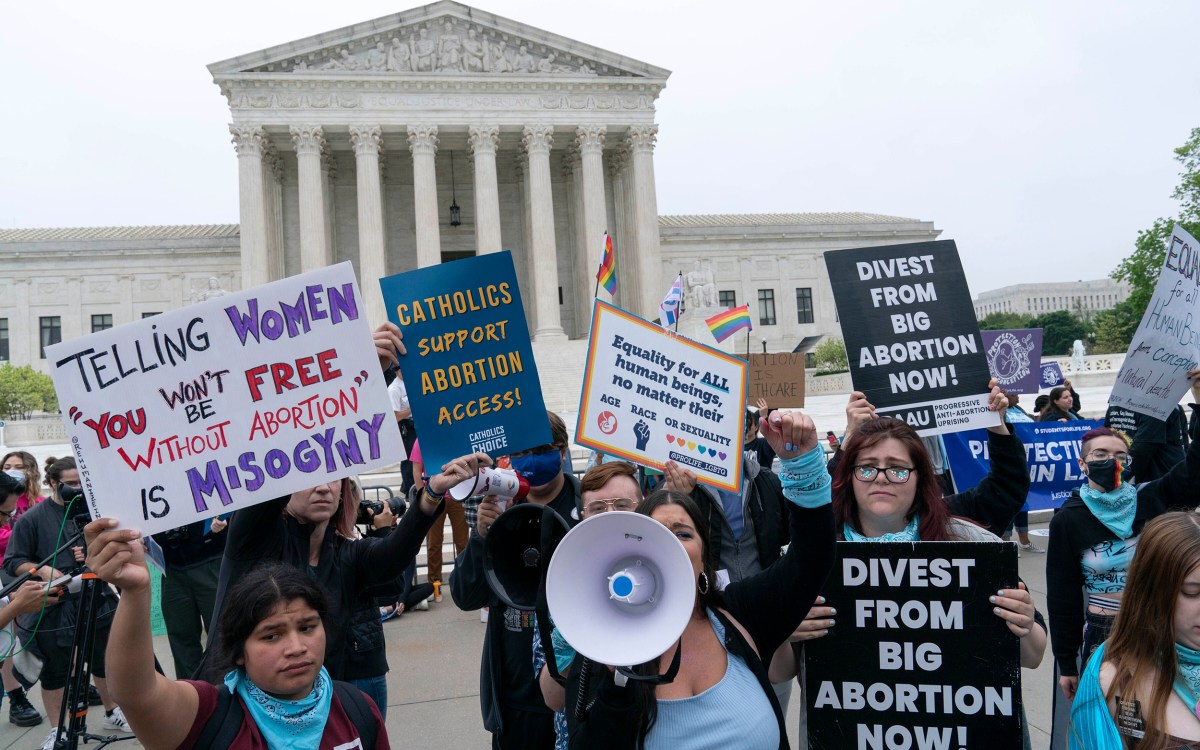
When the Constitution was written, free women were considered “covered persons,” meaning their “legal and political roles were defined within the household by either the voice of their husband or the voice of their father,” says historian Jane Kamensky.
File photo by Kris Snibbe/Harvard Staff Photographer
When abortion wasn’t a legal issue
Historian Jane Kamensky says it largely arose as evidence of ‘prior sin’ in closely circumscribed lives of colonial women
The recently leaked Supreme Court draft decision overturning Roe v. Wade pointed out there is no reference to abortion anywhere in the Constitution, never mind a right to it. Then again, the Constitution contains no reference to women either.
In the late 1700s when the Constitution was written, free women were considered “covered persons” under the law, meaning their “legal and political roles were defined within the household by either the voice of their husband or the voice of their father,” explained Jane Kamensky, Jonathan Trumbull Professor of American History and the Carl and Lily Pforzheimer Foundation Director of the Arthur and Elizabeth Schlesinger Library on the History of Women in America at the Harvard Radcliffe Institute.
The Gazette spoke to Kamensky about the legal considerations of women during the early history of the nation and how women lived under those conditions. This interview was edited for clarity and length.
Q&A
Jane Kamensky
GAZETTE: What was the consideration of women in American law during the period when the Constitution was created in the late 1700s?
KAMENSKY: If I were to have folks know one single thing about women in the colonial period, it’s the importance of the household as the basic social unit. The reason, for example, that most American women were not considered eligible for voting at the time of the Constitution — New Jersey being the exception — is because they were not imagined to be capable of independence as a covered person under their husbands. That, of course, is talking about free women, not the 20 percent of the British American population that was enslaved, where women were denied independent personhood by the institution of slavery.
GAZETTE: How did this play out in women’s everyday lives?
KAMENSKY: Women existed in a somewhat narrower physical, geographical, and political legal circle than men did. A very common metaphor of the time was the compass, and there was a slogan in some Anglo-American prints that said “keep within the compass.” At the time of the Constitution’s creation, more than 95 percent of the population of the United States was rural. So when we talk about most women’s everyday lives, we’re talking about women living on farms — often small holdings — and the “compass” for a farm woman was quite close to the household: a kitchen garden rather than a field, for a free woman.
One of the things we see changing at the time of the American Revolution is that the importance of mothers — as the people who raise republican citizens, i.e., their sons, and to a lesser extent, their daughters — was newly elevated. We see new writing and new practices on women’s education beyond the household or the very early schooling level, so that women could help equip a nation of new Americans for the burdensome duty of citizenship in the republic. When early Americans wrote about marriage, they wrote about it as a kind of equal partnership where women and men played vital but different and complementary roles, with the man firmly as the head but the woman as a key partner in household economies, in child rearing, in all the things that early American households did. That included the care of the sick, the education of the young, social welfare, provisioning of the infirm. So we shouldn’t imagine early American women as being utterly devalued, but they were not members of the political community.
“People often ask me if I could go back in time, what would I most want to see and do in the world of the American Revolution? And my answer is: I’m a woman. I wouldn’t want to go back in time for five minutes.”
GAZETTE: What were some of the developments in the consideration of women and their rights during this time?
KAMENSKY: The era of the Revolution and the Constitution was the first time since the early modern period that the idea of women’s rights began to be talked about. The Declaration of Independence said all men are created equal, and there was a centuries-long conversation about who fell under “all men.” Women participated in that conversation. Probably most famously Abigail Adams, writing to her husband, John Adams, who was at Congress in Philadelphia in the spring of 1776, said that she wanted to hear that the colonies had declared an independency, and when that happened, she hoped that he would “remember the ladies.” I think most scholars agree that Abigail Adams and her circle were not talking about voting rights, but about protection from family violence and other forms of tyranny, which was her keyword in the language of the day. She said that the Revolution opened the language to contest the practices of coverture, in which the husband’s authority over his wife’s political, legal, and physical person was theoretically limitless. We do see in the 1780s and the 1790s the first traceable flowering of women’s rights language and thinking, not only in the U.S., but also in England and famously in France with Mary Wollstonecraft’s “A Vindication of the Rights of Women.” Women’s status for centuries was much less a part of public discourse than it became in the years surrounding the Constitution, and the Revolution opened that door, but it was generations before even free women could walk through it.
GAZETTE: What do we know about pregnancy and birth at this time?
KAMENSKY: Reproduction in the colonial and early national era was in every way women’s work: thinking about pregnancy, birthing, child care, early childhood, and infant care was a landscape of women, their neighbors, and their midwives. Male medical authority only really began to enter the birthing chamber in the late 18th and early 19th century. Early American women had what we would today consider very large numbers of children — five to eight live births in the course of a reproductive lifetime — and women could expect to be pregnant or lactating almost all of their fertile lives. It’s also important to remember that childbirth was dangerous, with an estimated one in 20 births ending in maternal death. My Harvard Medical School colleague Louise King reminds us that maternal mortality remains a significant burden in today’s United States. In the Colonial and early national periods, to bear a child was to confront death, full stop.
GAZETTE: What about family planning?
KAMENSKY: We know that there was a vernacular practice of ending pregnancy in all kinds of communities of women, with herbal remedies especially, from time immemorial. We know that it existed among communities of enslaved women as well as free women and was very rarely a subject at law in the early American period. Legal historian Cornelia Hughes Dayton’s research on this reveals that abortion was commonplace and came before juries or judges exceedingly rarely, and then as evidence of what she calls “prior sin” — premarital or nonmarital intercourse — rather than out of concern for incipient life, or even some idea of what was natural.
We also know that people made self-conscious decisions about managing their own fertility on a household and community level, not mediated by doctors, medicines, and new technologies. Historical demographers talk about the fertility transition, which was a shift throughout Europe and America beginning as early as 1750, by some accounts, and continuing through the middle of the 19th century, where family sizes got significantly smaller. That five to eight live births on average in the era of the Constitution was significantly reduced by 1850, even though there was no new technology. So we know that people were regulating their own fertility, probably in collaboration with their partners in some way, maybe by prolonged nursing, maybe by selective and periodic abstinence, and maybe by taboos around intercourse for women who were nursing or who had recently given birth.
GAZETTE: What are the historical lessons that you think we can draw from the period of the Constitution when looking at the Roe v. Wade decision draft and its implications?
KAMENSKY: Because I study the era of the Revolution and think about many features of that world with real fondness and allegiance to the experiments of the United States, people often ask me if I could go back in time, what would I most want to see and do in the world of the American Revolution? And my answer is: I’m a woman. I wouldn’t want to go back in time for five minutes. They lived lives of incredible bravery and unremitting toil. I’m very grateful for their many struggles to pry open the doors of the promise of the Declaration of Independence for later generations of women and other non-rights holders at the time. But I don’t take their lives as a guidepost for mine, in any way.






